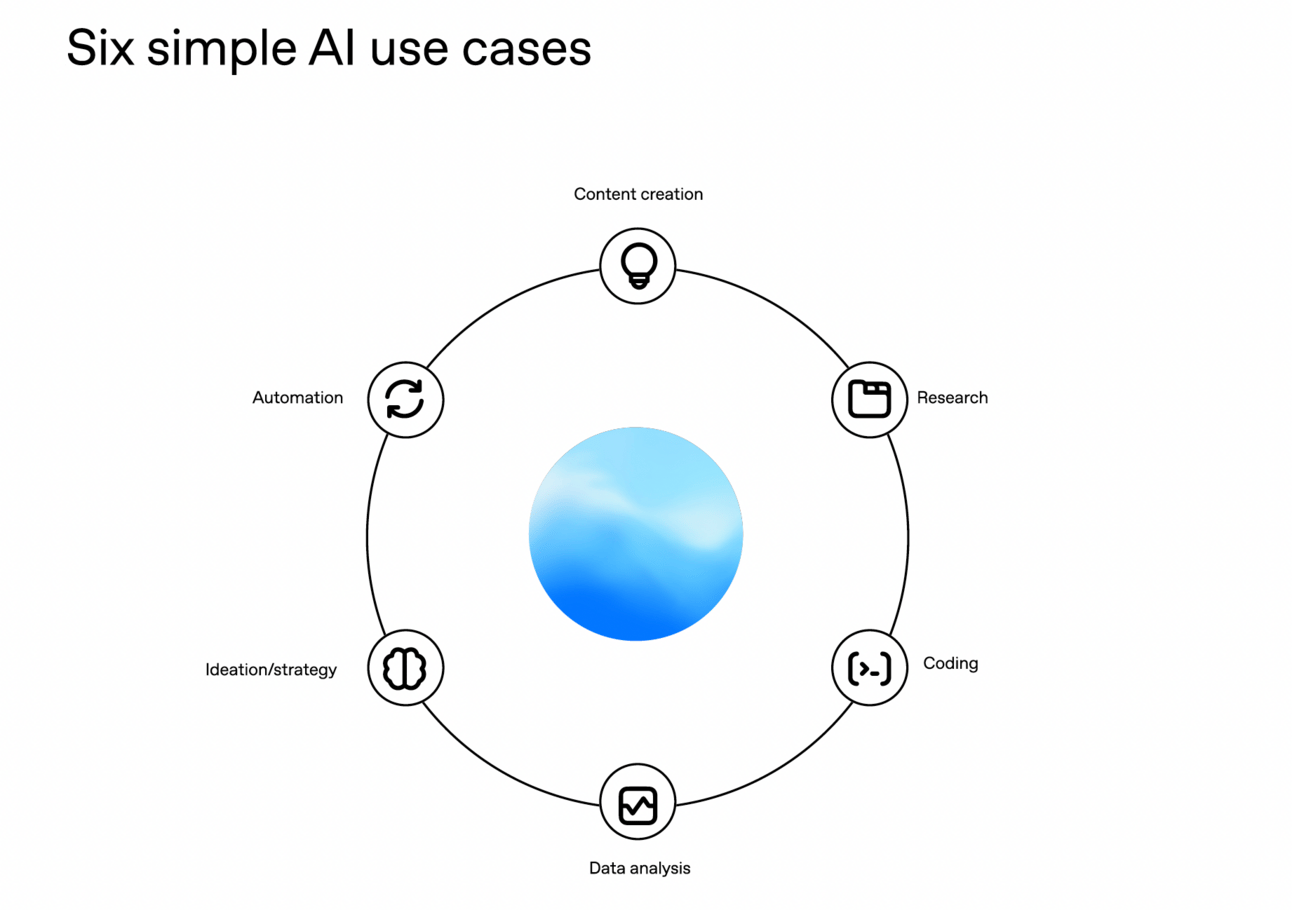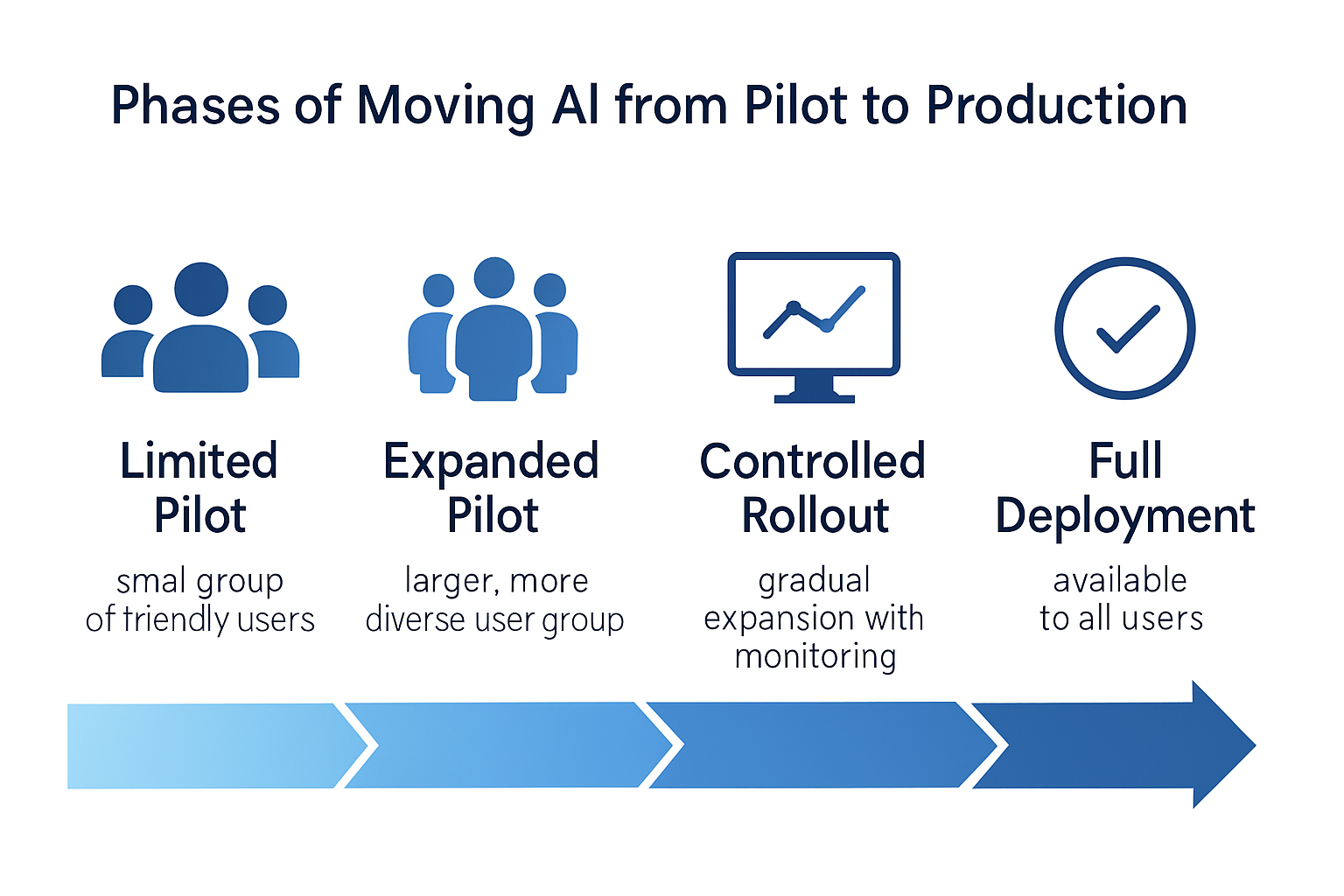Welcome back to our practical AI implementation series! Last week, we kicked things off by helping you identify high-value AI use cases in your business using the Impact/Effort Framework from OpenAI's guide on "Identifying and scaling AI use cases."
If you followed the action plan (and did your homework🎓), you should now have:
3-5 potential "quick win" AI use cases
A mapped workflow for your highest-priority department
Clear success metrics for each potential implementation
An inventory of your relevant data sources.
Now comes the exciting (and sometimes challenging) part: turning those promising AI pilots into business results that actually matter.
The Pilot-to-Production Gap 🤔
Reality check time: According to Hypermode's 2025 research, 88% of AI pilots fail to reach production.
Yup, that's a whole lot of wasted time, money, and enthusiasm.
For small and medium businesses, this stat is even more important. You don't have enterprise budgets to burn on failed experiments.
This is precisely why we talk about 'hype-free AI' at The Context Window. No one (especially SMBs) has cash and time to burn on shiny tech that doesn't deliver.
Buy vs. Build: The SMB Advantage 💰
Here's the good news: In 2025, small businesses actually have an advantage in AI implementation. Why? Because the "buy" option has never been better.
While enterprises are building custom AI solutions (and hitting all the expensive roadblocks), smart SMBs are leveraging pre-built AI tools that:
Require zero coding
Come with pre-trained models
Integrate with your existing tools
Cost a fraction of custom development
Think of it like transportation: Enterprises are trying to build their own cars from scratch, while you can just call an Uber.
Six AI Use Case Primitives for SMB’s 💡
OpenAI's guide identifies six fundamental use case primitives that work perfectly with off-the-shelf solutions:

Image: Six simple AI use case primitives (Source: OpenAI, "Identifying and scaling AI use cases")
For each primitive, there are plenty of SaaS tools, below are some tools SMBs are using successfully: (Yes - we will be covering SaaS tools and reviews in a seperate section so stay tuned)
Research: Perplexity, Elicit, You.com
Coding: GitHub Copilot, Replit, Vercel AI SDK
Data analysis: Obviously AI, Akkio, Google Sheets AI
Automation: Zapier AI, Make, Microsoft Power Automate
The key is matching your "quick win" use cases from Part 1 with these ready-to-use solutions rather than building from scratch.
⚠️ Start with focused implementations that can demonstrate clear value before attempting organization-wide deployment. ⚠️
Three Critical Shifts for Moving from Pilot to Production 🔄
Based on research with dozens of companies who have successfully implemented AI, there are three fundamental shifts that need to happen when moving from pilot to production:
1. From Perfect Solution to Good Enough
Enterprise trap: Waiting for the perfect custom solution
SMB win: Using 80/20 solutions that deliver value today
The fix: Evaluate SaaS tools based on "good enough" for your specific use case, not perfection.
Real example: Traction Complete, a 15-person company, tried building a custom AI for lead scoring before realizing HubSpot's AI tools gave them 90% of what they needed at 10% of the cost.
2. From Technical Complexity to Business Outcomes
Enterprise trap: Getting lost in model accuracy and technical details
SMB win: Focusing exclusively on business results
The fix: Judge AI tools solely on whether they improve your key metrics (revenue, time saved, customer satisfaction).
BCG research shows successful SMBs focus on business outcomes first, technology second.
3. From All-in-One to Best-of-Breed
Enterprise trap: Looking for comprehensive platforms
SMB win: Combining specialized tools for specific workflows
The fix: Start with one targeted AI solution per department, then connect them with automation tools like Zapier.
Five Steps to Move from AI Pilot to Production 🛠️
Ready to get tactical? Here's your step-by-step roadmap for taking an AI opportunity from "interesting idea" to "business-changing reality." This isn't theory - it's the exact process successful SMBs are using to implement AI without the enterprise-level complexity and cost.
Step 1: Start with One Focused Use Case
Pick your highest-impact, lowest-effort opportunity from Part 1. For most SMBs, this is automating a repetitive task that eats time.
Step 2: Choose Buy vs. Build (Hint: Usually Buy)
When to buy: The problem is common across businesses (customer service, content creation, data analysis)
When to build: Your specific domain knowledge is your competitive advantage
Pro tip: Even when "building," start with APIs from OpenAI, Anthropic, or Google rather than from scratch.
Step 3: Run a 2-Week Paid Trial
Don't overthink it. Most AI SaaS tools offer trials:
Test with your actual data
Involve the real end users
Measure concrete outcomes
Compare against your current process
Step 4: Integrate Before You Scale
Before rolling out to your whole team:
Connect the tool to your existing systems
Create simple SOPs for common workflows
Establish when to use AI vs. when not to
Set up basic monitoring of results
Step 5: Start Small, Scale Gradually
Use a phased rollout strategy:

Image: The four phases of moving AI from pilot to production (Source: Context Window, 2025)
👆 Pro tip: Document learnings at each stage and use them to refine your approach for the next phase.
For SMBs, this typically means:
Pilot (2 weeks): 1-2 power users testing the solution
Limited rollout (1 month): One department using it daily
Full deployment (ongoing): Company-wide adoption with training
Optimization (quarterly): Regular reviews and improvements
Common Pitfalls (And How to Dodge Them) ⚠️
Let's be honest - most SMBs make the same mistakes when implementing AI. The good news? These are all completely avoidable if you know what to watch for. Here are the biggest traps I see small businesses fall into, and more importantly, how to sidestep them entirely.
1. The "Perfect Model" Trap
The pitfall: Endlessly tweaking model parameters to get that last 1% of accuracy while delaying actual deployment.
The solution: Establish "good enough" thresholds based on business impact, not technical perfection. Ship early, learn fast.
2. The Integration Nightmare
The pitfall: Discovering too late that your AI system doesn't play well with existing tools and workflows.
The solution: Map integration points early and build connectors before finalizing your model. Test with actual production systems, not simulations.
3. The Explainability Crisis
The pitfall: Users don't trust or understand the AI's decisions, leading to low adoption.
The solution: Build explainability into your system from the start. Focus on transparent outputs that help users understand not just what the AI decided, but why.
4. The Maintenance Blindspot
The pitfall: Not planning for how the system will be maintained and updated over time.
The solution: Document everything, build update mechanisms, and establish clear ownership for ongoing maintenance before going live.
5. The Scaling Surprise
The pitfall: A system that works perfectly with 10 users suddenly breaks with 1,000.
The solution: Load test aggressively and design with scalability in mind from day one. Consider cloud-native architectures that can scale dynamically..
Your Action Plan for This Week 📝
Building directly on the work you (hopefully) did in Part 1 using OpenAI's frameworks:
Choose one "quick win" use case from last week's list to implement as your first production AI project
Define your Minimum Viable AI for this use case (one-page specification)
Map your data pipeline needs and identify any gaps
Create a simple observability plan with 3-5 key metrics to track
Design your phased rollout strategy with clear criteria for moving between phases
The hands-on experience you gain this week will be your secret weapon for scaling successfully.
Next Week: Scaling Success (3rd and Final Part) 🔮
The work you do this week sets up our finale: Part 3 - Building an AI-powered SMB.
We'll cover:
Portfolio approach to managing multiple AI initiatives
Building AI capabilities across your organization
Governance frameworks that enable innovation while managing risk
Measuring and communicating AI's business impact
The hands-on experience you gain this week will be your secret weapon for scaling successfully.
Want to Connect? 🗣️
Want to connect with me about practically using AI in your business? Message me on LinkedIn with your thoughts or questions!
Since we love hype-free AI here, check out our poartners 1440 - for Hype-Free, Honest News!
Receive Honest News Today
Join over 4 million Americans who start their day with 1440 – your daily digest for unbiased, fact-centric news. From politics to sports, we cover it all by analyzing over 100 sources. Our concise, 5-minute read lands in your inbox each morning at no cost. Experience news without the noise; let 1440 help you make up your own mind. Sign up now and invite your friends and family to be part of the informed.
💡 We are out of tokens for this week’s Context Window!
Thanks for reading!
Follow the author:
X at @hashisiva | LinkedIn




